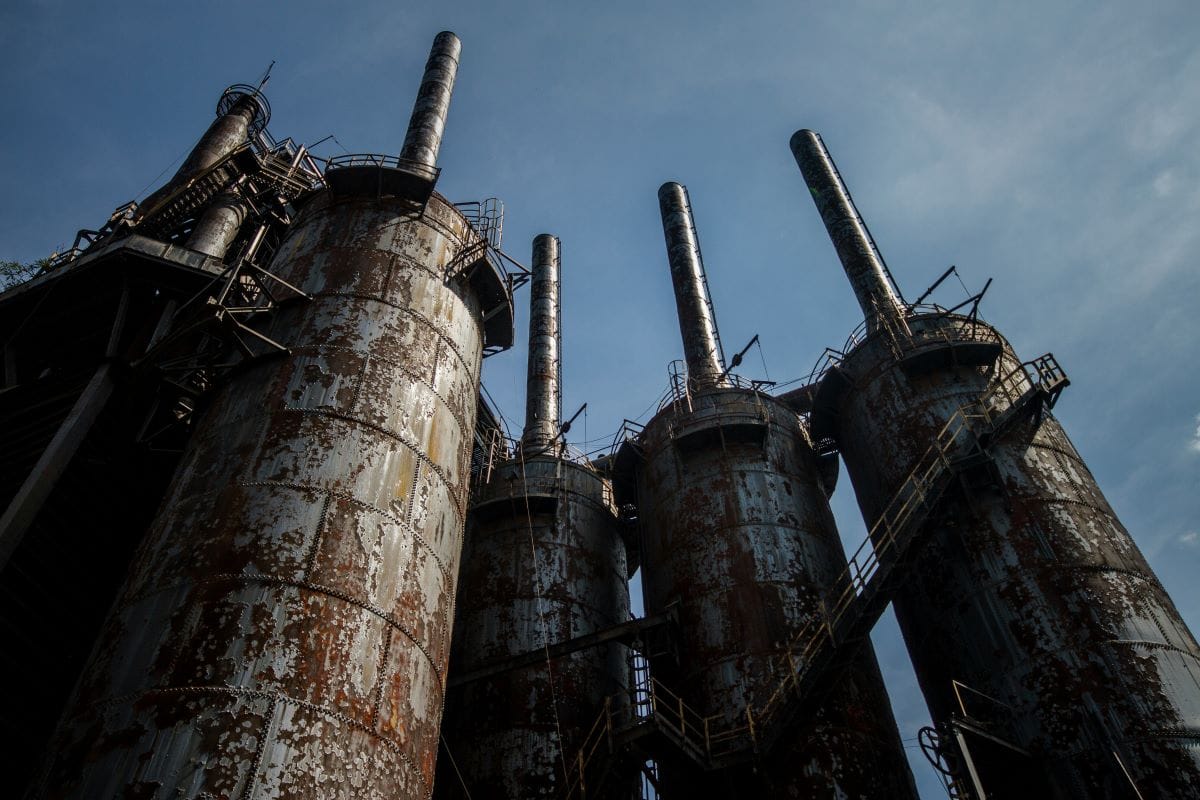The Second Industrial Revolution

In the 50 years between the Civil War and the First World War, the United States had transformed into one of the world's major economic superpowers. Industrialization was boosted by the Civil War, which required the construction of new factories to produce more weapons, ammunition, and other materials for war.
After the Civil War, many industries popped up and became very profitable. The steel industry benefited from the discovery of new iron ore veins in the West, where most steel production became centered. Agricultural advancements such as a type of wheat immune to rust and drought made American farmers profit and enabled the US to become a major food exporter. Other scientific advancements, such as a treatment for hog cholera profited the country. To top it all off, many new inventions such as the typewriter, cash register, telegraph, and others, made work and communications much more efficient.
This second industrial revolution was also called the Gilded Age, named that way because, while it looked very prosperous, there was a lot of corruption and, for many people, especially factory workers, the quality of life actually decreased. This term came from Mark Twain's 1873 novel The Gilded Age. In this era, large corporations were able to grow because of the very few laws restricting them, and the owners' tendencies to find and exploit loopholes in the existing laws.
The Second Industrial Revolution had very few labor restrictions, or laws and restrictions that governed workers' rights. Some labor restrictions that could have helped many people during this time were:
- Workplace safety laws,
- Higher minimum wage and overall wages,
- Restricting child labor and providing free education,
- Placing a restriction on the number of hours that a laborer had to work,
- The right of collective bargaining, or the right of employees to negotiate with their employer as a group, rather than individually, such as during a strike.
Another important issue during the Second Industrial Revolution was that of immigration. On one hand, immigrants provided a steady flow of cheap and often reliable labor and many found employment in factories and other types of unskilled labor. However, many Americans feared that the immigrants would replace them in their jobs and influence politics.
To many people, the United States seemed like a place of infinite opportunities. However, many who wanted immigrate to the United States in the second half of the nineteenth century were disappointed. Firstly, many people were excluded from immigration, for example the Chinese (after the 1882 act banning immigration from China), and those who were deemed "likely to become a public charge", or people who were likely to become dependent on public assistance. This category included people considered too stupid to work, who didn't know English, and who were considered insane. Other immigration restrictions were in place during this time such as quotas on immigration and the preference for some nationalities (English, Germans, and Scandinavians) over others (most of Eastern Europe and Asia).
Chinese immigrants who managed to get into the country had some unique challenges that many immigrants did not have. Since many were effectively 'imported' by the various railroad construction companies to help build railroads, these railroad companies paid their tickets. These immigrants would then have to pay back the companies they worked for, many times with interest, from their salaries, which would lead to many Chinese immigrants becoming very poor.
Others who managed to immigrate had mixed experiences with the United States. On one hand, they had many freedoms and opportunities they might not have had in their home countries, such as the freedom of religion or freedom of speech and the opportunity for "upward mobility", or getting to a higher class than they were before. Many also came to meet their families, who already lived in the United States.
However, there were some caveats. In the late nineteenth century, many immigrants had a hard time finding jobs in the United States. They competed with the native-born Americans and freedmen all vying for the same jobs as them. In low-skill jobs, immigrants were also generally exploited by employers, who usually paid them less than native-born Americans. Many immigrants were also unable to practice their trades in the New World, such as the many farmers who came to America. Lacking land to farm on, they were forced to work these low-skill jobs, and almost never had the chance of upward mobility that many of them came to America for.
My opinion is that immigration is usually a benefit to a country, as long as it is regulated based on the moral character and the skills of the individual who wants to immigrate, not their nationality (e.g. a Mexican with a history of being a good citizen and useful skills would be a better candidate for immigration than a German with a criminal record, even if it's minor). It's also understandable to restrict the amount of immigrants allowed to enter the country per year, but make sure that every person from every country has an equal chance of getting into the US (except for people from countries that are at war with the US or have a history with terrorism).
During this Western Expansion, entrepreneurs, often referred to as "captains of industry" or "robber barons," amassed great wealth and played key roles in shaping the American economy. Notable figures include Andrew Carnegie, who dominated the steel industry, and John D. Rockefeller, who controlled much of the oil industry. Their business practices and the vast fortunes they accumulated sparked debates about their impact on society, both positive and negative. I think that overall, the "captains of industry" had a positive effect on the overall economy of the United States by increasing the country's production, but they had a negative impact on the society, which suffered due to their monopolies and abusive business practices, such as paying very low wages for dangerous jobs.
Andrew Carnegie believed that the wealthy had a responsibility to use their riches for the benefit of the public, creating what he called the "Gospel of Wealth". He wrote that the rich should live modestly and provide for their families and then use the surplus of their wealth to help others. Carnegie believed that charity without a plan is not only useless, but dangerous for the people receiving the financial help. He wrote that the best kind of charity is one that helps people help themselves, such as funding libraries, schools, and other institutions like these. According to Carnegie, people "worthy" of charity were those who would benefit from and utilize the resources given to them to better themselves and society. In contrast, those "unworthy" of charity were individuals who would squander the aid and remain dependent on it, without making any effort to improve their situation.
During this time, the government attempted to strike down the monopolies that the major companies in the United States had created with new "antitrust" laws, the first of which was the Sherman Antitrust Act of 1890. Monopolies are bad for the economy because they drive prices up and stop any competition from having a chance in the market, which helps drive innovation. One of the most infamous examples of a monopoly breaking was the case of the Standard Oil Company, which was broken up in the 1911 Supreme Court case U.S. v. Standard Oil Company of New Jersey into 39 different companies.
Cities also grew rapidly with the influx of immigrants and job-seekers who found places to work there. Cities had many advantages, such as plentiful job opportunities and entertainment. However, many disadvantages also presented themselves, such as the unhealthy environment and the widespread corruption. One of the biggest sources of corruption were the "political machines", or powerful organizations led by a "boss" or a small group of leaders who bribed immigrants and other poor citizens with food and housing in exchange for votes to ensure that they stayed in power. One of the most infamous political machines was the Tammany Hall in New York City, led by William Magear Tweed, who, at one point, embezzled $200 million dollars worth of NYC funds.




